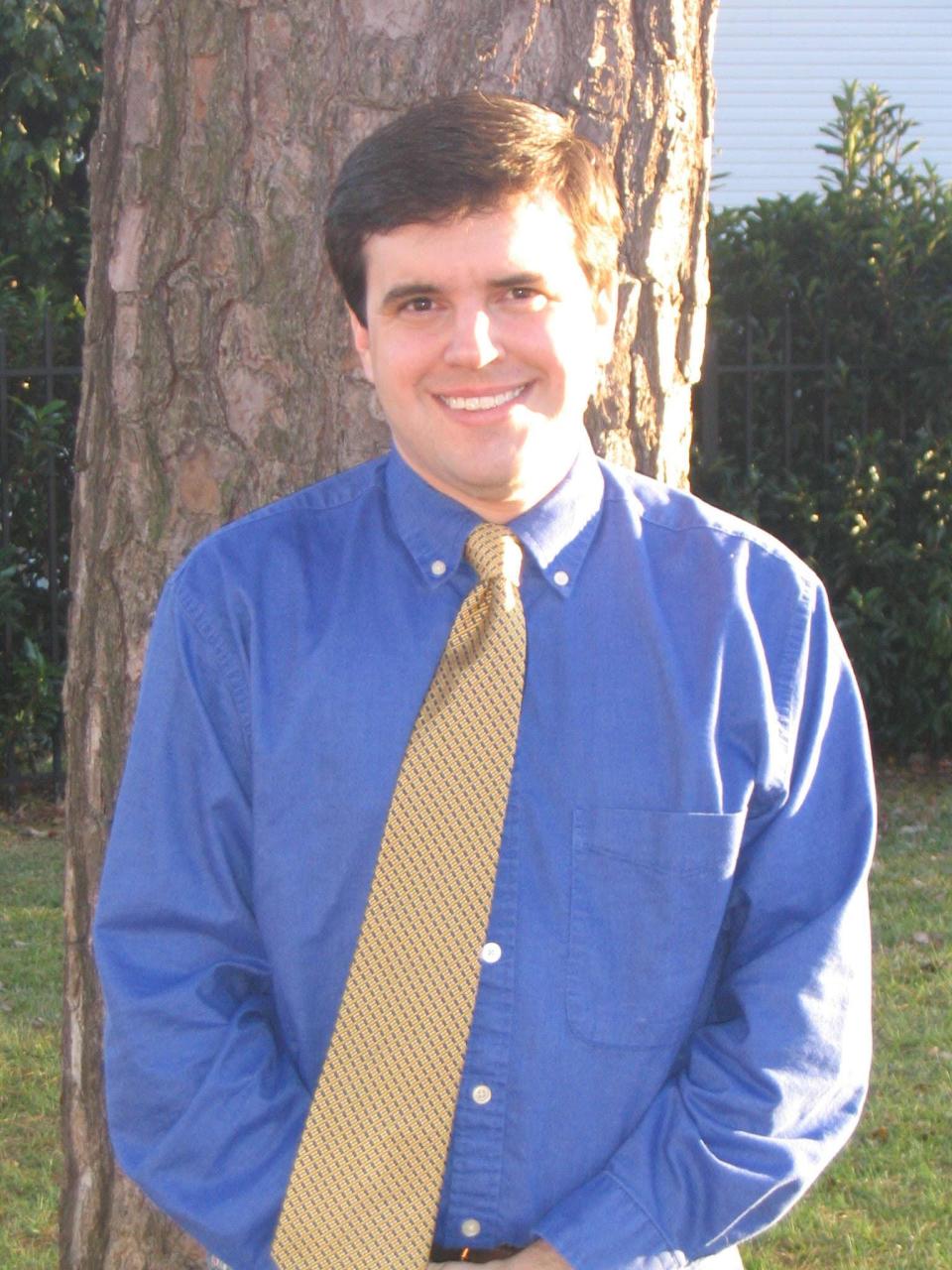Bridges Texas history column: The original 'maverick' takes on many roles, meanings
- Oops!Something went wrong.Please try again later.
Samuel Augustus Maverick came to Texas with a dream of making a fortune in land sales. In the process, he became one of the most memorable characters in the history of the state and an important figure in its early history. In the process, he became the original “maverick.”
Maverick was born in 1803 in South Carolina. His father was a planter and real estate speculator. The younger Maverick was educated by tutors at home and later attended Yale University, graduating in 1825.

Upon graduation, he returned to the family plantation where he inherited his father’s passion for dabbling in real estate investments. He decided to become a lawyer and apprenticed himself under a Virginia judge, becoming part of the Virginia bar in 1829. He returned home once again and opened a law office. In 1830, he ran for the South Carolina House of Representatives but lost the race. Maverick was a committed Unionist in a state where secessionist sentiment was growing. Frustrated, Maverick left for Georgia in 1833 and then to Alabama in 1834.
He saw the many opportunities to be had in Texas and arrived in March 1835. When he arrived, he found a land on the brink of war. He arrived in San Antonio in October as Texas settlers began surrounding the city and laying siege to it. Gen. Martin Perfecto de Cos, commanding the 650 troops in San Antonio, did not trust the motivations of Maverick and immediately had him arrested. He was released in December, upon which Maverick immediately told the Texans to attack.
In 1847, he bought a herd of 400 cattle. Soon, Maverick became synonymous with the term “maverick,” meaning an unbranded calf. He claimed that he refused to brand his cattle because he did not want to inflict unnecessary pain on the creatures so his cattle remained unbranded. His contemporary critics claimed that it made it easier for Maverick to claim other unbranded cattle as his own though there is very little evidence of his claiming cattle that were not his own. Branding is a routine practice among ranchers to this day, with its use dating as far back as ancient Egypt thousands of years ago. It was a common practice in Spain during the Middle Ages, and the tradition was brought to the New World and used by cattlemen in what was then Spanish territories like Mexico and Texas. Maverick’s defenders pointed out that his primary interest was in real estate and not cattle. Whatever Maverick’s true motivations were remain clouded, but his stubbornness on the subject became widely known. As a result, “maverick” gained another popular meaning, someone who is independent or unconventional in his thinking.
With Mexico preparing to take the Alamo with overwhelming force, Texans were attempting to organize a new, independent government. Alamo defenders decided that he should leave the garrison to represent the defenders. Maverick managed to leave the Alamo and escape the Mexican Army on March 2, just as Texas delegates were declaring independence at Washington-on-the-Brazos. He arrived on March 5 and participated in the early discussions about the future government of Texas and how it would win the fight with Mexico. The Alamo would fall on March 6, and Maverick would learn the sad fate of the defenders shortly afterward. He fell ill, which left him largely unable to participate in the remainder of the conflict.
He married just after the war in 1836. He and his wife would have ten children together. In 1838, he built a home in San Antonio and was elected mayor. At that point, San Antonio was still a small city of around 3,000 souls, tiny compared to the modern metropolis that it has since become.
In 1850, he was elected to the state legislature. He would serve for the next twelve years. Maverick worked for an efficient justice system and for fairness for both German and Mexican residents of his district. And he worked to ensure it was easier to buy land. By 1851, he owned more than 140,000 acres; and his holdings were growing. He was already one of the largest landholders in western Texas. After doing some construction work on his property in 1852, he discovered that the retreating Mexican Army in 1836 had buried 13 out of the 21 cannons used at the Battle of the Alamo. Maverick donated them for historic preservation. Out of respect for his achievements, Maverick County was established on the Rio Grande in his honor in 1856.
When Texas considered secession in early 1861, Gov. Sam Houston was strongly opposed. Maverick supported Houston and the Union. Unionists across the state faced strong-arm tactics and death threats, including Houston. Seeing that secession was inevitable and facing intense pressure, Maverick reluctantly voted at the secession convention in favor of Texas leaving the Union.
He was elected mayor of San Antonio once again, serving a second two-year term in 1862 and 1863. San Antonio now had a population of nearly 10,000, swelling as the war progressed. During this time, Maverick also served as a judge for Bexar County.
Maverick remained active in Democratic politics in the years after the Civil War. His land holdings expanded to 300,000 acres. He died quietly at his home in 1870 at age 67. His grandson, Maury Maverick, became a congressman representing San Antonio in the 1930s and was himself a respected figure in the city.
Ken Bridges is a writer, historian and native Texan. He holds a doctorate from the University of North Texas. Bridges can be reached by email at drkenbridges@gmail.com.
This article originally appeared on Amarillo Globe-News: Bridges Texas history column: Original 'maverick' in cattle, politics

